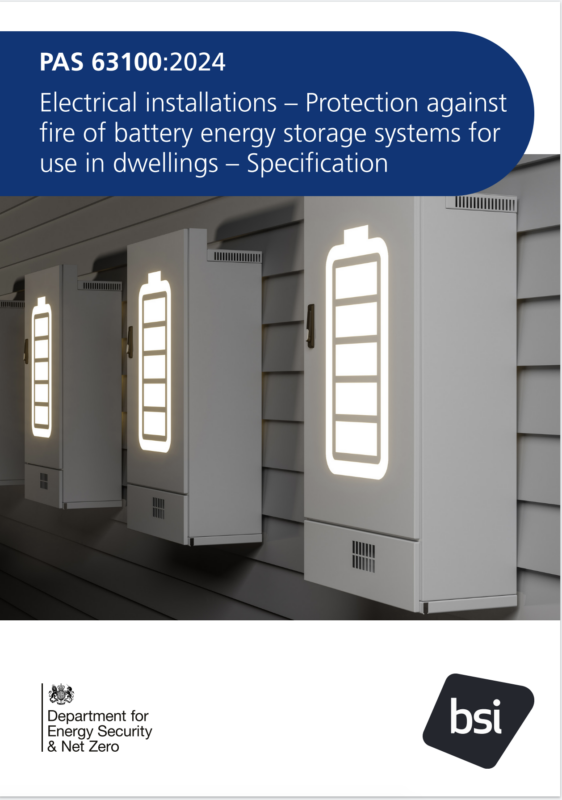A new British Standard for the fire safety of home battery storage installations, which came into force on the 31st March 2024, will have significant impact on how and where new home batteries are installed.
The new standard PAS 63100:2024 is available as free download from the British Standards Institute.
Home Batteries
Home Electrical Energy (Battery) storage has formed a key part of many of the recent solar photovoltaic (PV) applications that come through the Zero Chippenham Community Solar Discount scheme. Recent falls in the cost of battery technology coupled with the significant rise in energy costs two years ago has also seen a growing interest in standalone ‘AC’ battery installations or retrofit batteries to existing installations. The change in VAT regulations in February 2024 to zero rate standalone and retrofit battery storage installations was a welcome change.
It has been common in some instances where space is at a premium to install batteries in loft spaces or under stairs in houses.
These new regulations change that significantly and introduces the basic premise that the best place for storage batteries is outside dwellings and away from habitable rooms. Where it is not practicable to locate batteries outdoors some basic requirements are provided for locations containing storage batteries, based on the principles that:
- batteries are separated from habitable rooms, and means of escape for inhabitants, by suitable fire compartmentation
- Fire detection is provided for battery location, interlinked to a fire alarm system to warn inhabitants of a detected fire; and
- means for escape for inhabitants are not inhibited
It should be noted that fires from domestic home energy storage batteries are extremely rare. Most Home energy batteries use Lithium Iron Phosphate technology (LiFePO4). Whilst this technology makes for a heavier battery, it is known to be very safe and does not catch fire under any normal circumstances.
Under the new standard, batteries shall not be installed in any of the following locations:
- rooms in which persons are intended to sleep
- routes used as a means of escape that are not defined as protected escape routes including landings, staircases and corridors
- corridors, shafts, stairs or lobbies or protected escape routes
- firefighting lobbies or staircases
- storage cupboards, enclosures or spaces opening into rooms which persons are intended to sleep;
- outdoors within 1m of escape routes, doors, windows, or ventilation ports
- voids, roof spaces or lofts
- within 2m of stored flammable materials and fuel storage tanks or cylinders; and
- cellars or basements that have no access to the outside of the building
There are a number of additional requirements that can be read in the standard.
Inverters
The new standard also covers Power Conversion Equipment (PCE). Specifically Inverters and converters.
Where an inverter is placed in an infrequently accessed location such as a loft space, a smoke detection or alarm system must now be installed.
What if I already have a battery or inverter installed in these locations?
The new standard came in to force on the 31st March 2024 and does not retrospectively apply to installations before that date.
You may however wish to read the standard in detail and consider whether any changes to your own installation are appropriate given the requirements of the new standard. For example if you have a battery installed in your loft perhaps you might want to retrospectively install a fire detection system?
I hope this update is helpful.
Matthew


